Audio-Technica upgrade the hugely successful AT-LP120 DJ turntable. Greg Scarth finds out how the new version builds on the winning formula.
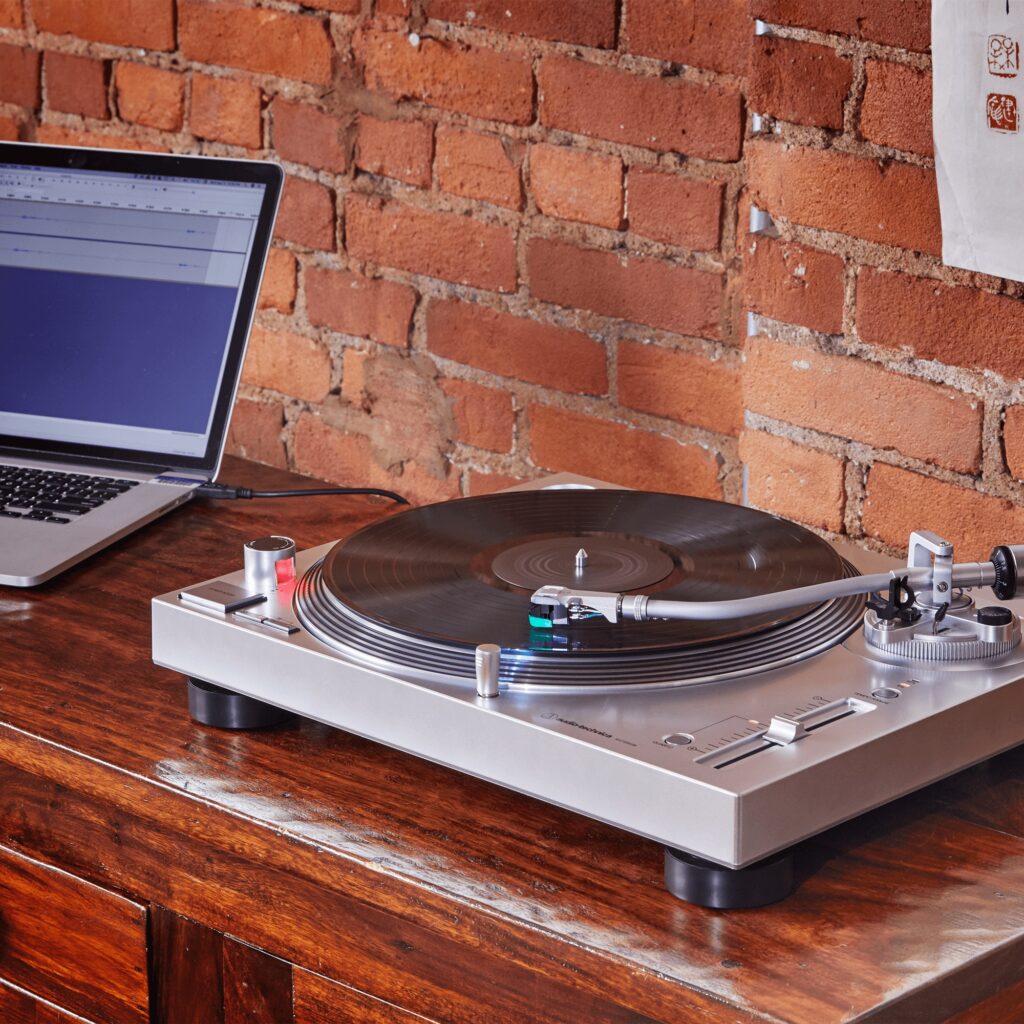
Studio equipment
Our full range of studio equipment from all the leading equipment and software brands. Guaranteed fast delivery and low prices.
DJ equipment
Our full range of DJ equipment from all the leading equipment and software brands. Guaranteed fast delivery and low prices. Visit Juno DJ
Vinyl & CDs
The world's largest dance music store featuring the most comprehensive selection of new and back catalogue dance music Vinyl and CDs online. Visit Juno Records
Audio-Technica upgrade the hugely successful AT-LP120 DJ turntable. Greg Scarth finds out how the new version builds on the winning formula.

This spicy offering from 1010music’s new synth range promises polyphonic wavetable sounds in a compact format. Greg Scarth puts it to the test.
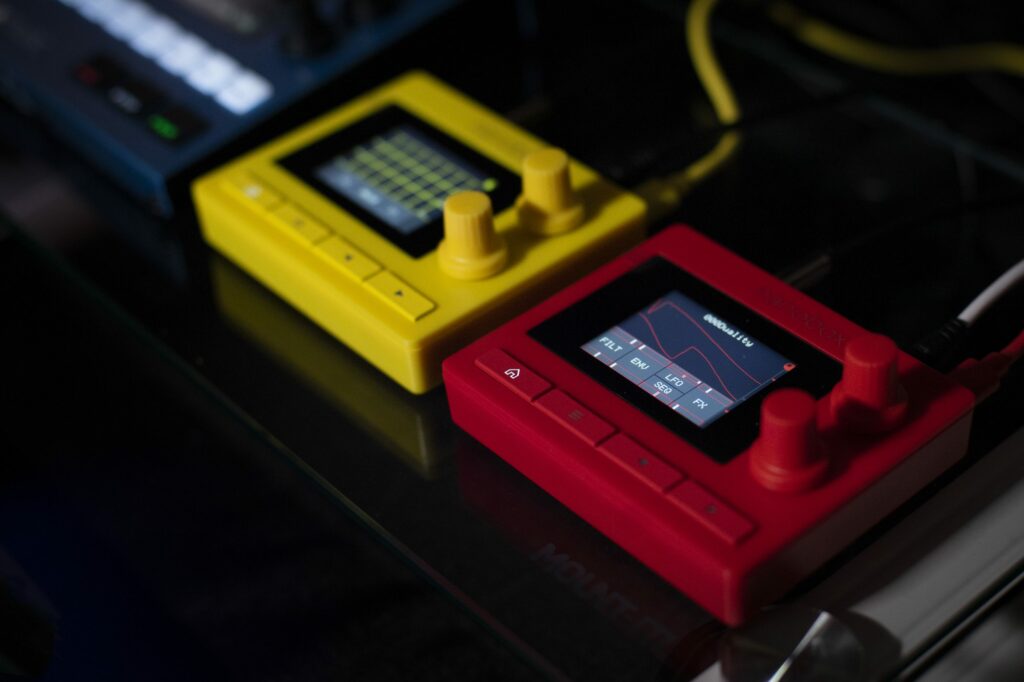
This simple DJ controller helps you get started learning how to mix. Greg Scarth puts it to the test.
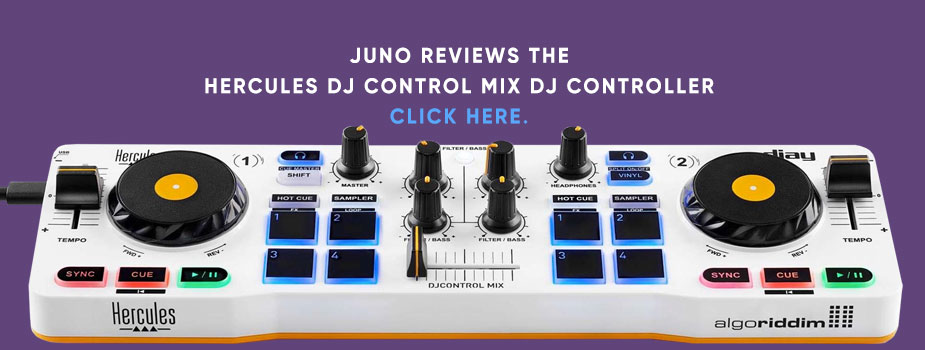
This month’s best modules include function generators from After Later and Tesseract, dual filters from ALM and Xaoc, plus a killer digital distortion from WMD.

We say a resounding Yes DJ to the chance to meet Simo Cell
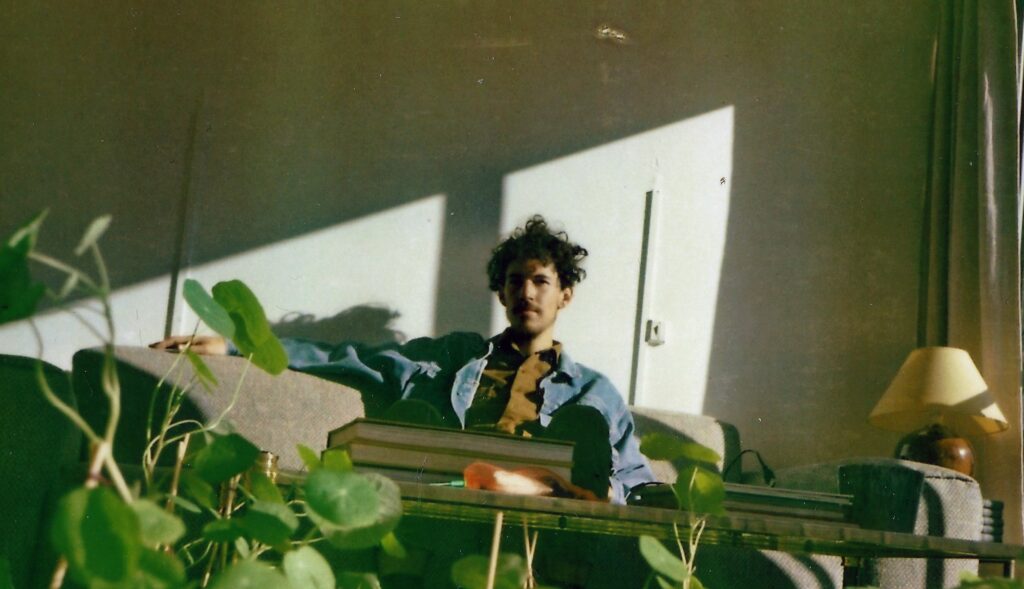
Multi-genre producer Simo Cell’s newest EP YES.DJ channels the affirmative aura of club culture, eclectic genre blends, and the burgeoning French electronic scene. Made in the same bout of inspiration that led him to photograph every free drinks token received at the DJ gigs he played (beginning ‘DRINK TICKET SELECTOR’, his obsessive Instagram account dedicated to said vouchers of joy), YES.DJ matches this well-traveled documenting of club culture, spanning the juke, trap, and bass music influences endemic to his style.
We caught up with Simo for his thoughts on lockdown, image culture in DJing, and the popularity of promotional fanzines for new, groundbreaking French music.
The French scene seems to have exploded in the past five years – with everything from emo rap to dancehall to cassette culture exploding and growing in popularity. From your POV, do you agree that French electronic music is going through a kind of renaissance and leading the charge? What is it about France that fuels its creative fire?
You’re right, there are so many different niches that I find it difficult to follow everything that is happening. Between Gabber, Dancehall, Bass Music, House, Techno, Dub or DNB… It’s amazing.
It’s very new. We spent a long time looking for a successor to the French Touch era (Daft Punk, Air, Phoenix, then Ed Banger, Justice, Sebastian…) but things changed. This is probably what makes the strength of our scene today.
BFDM probably played an important role in the kind of renaissance you’re talking about. It started in 2015. The Lyon scene was burning and no one really understood what was going on. At that time all the ingredients were there to make it work :
-a great club with a strong infrastructure: le Sucre
-a strong record store/distributor: Chez Emile
-a leader, Judaah. He gathered a team of good friends and talented emerging artists around him.
When we look at all the releases on BFDM, , there is not a specific sound signature since the musical spectrum is very broad. But all the artists from the label share the same energy and dynamics. This team energy best defines what is happening in France.
There are also a lot of connections made between artists and crews from different cities at the moment. For example, the underground scene has had to reinvent itself and organize parties in villages and farms in the last year. There is a whole network from North to South with small parties and festivals. People organize parties on their own, they craft their own soundsystem, build everything from scratch and invite local artists and friends of friends to play. It’s a huge talent hotbed, a grassroots strength.
Going into the making of this release, which artists and genres were you listening to and playing most? Care to name any tracks that inspired you at the time?
I was playing Trap beats, Footwork, Jersey, Drum n Bass, Bass Music. A lot of stuff around 140, 160 et 90 bpm basically.
I wrote Whispers with the idea of making a track with the same energy as ‘Senzu’ from As Manual. I have played this track so many times in the last few years.
Short Leg is actually a track that I made during an Ableton Workshop. I was in Tunis for a residency organised by a crew called Neuvième Ruche. The idea was to learn how to work with a very limited number of samples in order to show that limits can increase your creativity. I was teaching the session and participating at the same time, this is how Short Leg came out.
Regarding Short Leg’s mixdown , I tried to achieve the same result as ‘Kill Bill Vol. 4’ from Modeselektor.
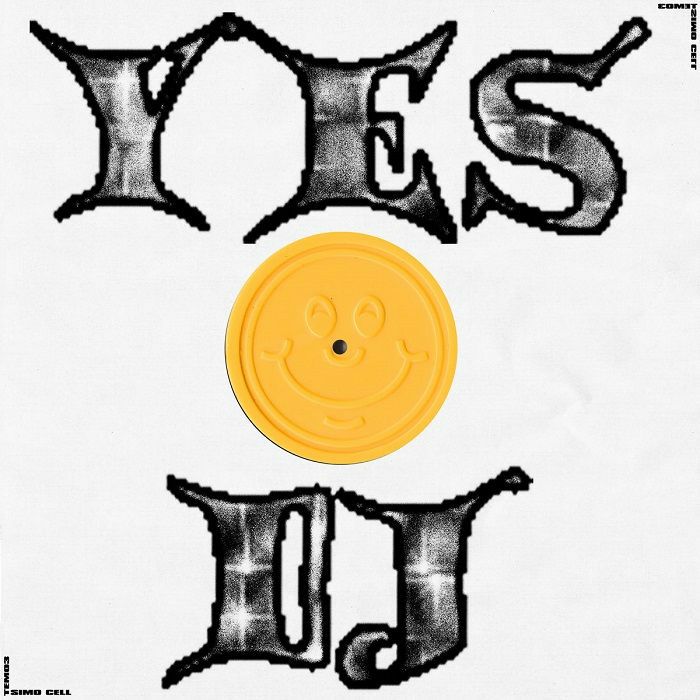
It’s hard to pigeonhole any track on YES.DJ into one genre. Was this an intentional effect, or just something you found yourself doing?
I produced a lot of music in the last 3 years, I wanted to take my time before releasing a new ep. It wasn’t an intentional effect, I just sorted all my demos and tried to come up with a cohesive whole.
I always try out a lot of different styles when I’m in the studio. As a DJ, I also play a lot of different styles. My approach as a DJ nourishes the way I produce club music.
On the other hand, I spent a lot of time defining particular colors, sounds and textures. I did a lot of work around low frequencies and compressions. The hats and high frequencies have a very special signature as well, a very crunchy sound.
That’s why I allow myself to incorporate so many different aesthetics into my music since it’s digested in a very personal way.
You’ve said YES.DJ’ has so much energy because you had lots of pent-up frustration left over from lockdown. What was your experience of lockdown like? Could you shed some more light on how you channeled those frustrations to achieve a creative result?
I was actually really good during the first lockdown. I felt lucky being able to stay at home, rest and stepback.
Winter 2021 was much more complicated, it was a big emotional rollercoaster with waves of fears. I suffered a lot from the lack of social contact. I lost self confidence. I started to wonder what I could do if I had to stop the music. I spent a tremendous amount of time thinking and trying to figure out what might happen, but couldn’t formulate clear answers.
The only way to reassure me was to work. I fell into a workaholic, I spent 8 hours a day at the studio. I told myself that the more music I had in stock, the more quiet I would be afterwards. He was a defense mechanism. I feel way better now because I realise it’s impossible to know what is going to happen. I will do music as long as possible without thinking about plan B. I guess answers will come naturally if i’m not able to make a living with my music. I would say I trust myself more after this lockdown experiment.
On the other hand, I was extremely creative, I opened up to other musical styles. I listened to a lot of RNB, pop Music but also traditional Argentinian music like Milongas. My father is from Argentina and I wanted to reconnect to my roots. In short, all these inspirations fed my work in the studio.
What can you tell us about the fanzine that comes with the EP?
I’m putting out a book with my collection of drink tickets to go with my mini album. It’s a way to pay a tribute to the club culture. Also, I wasn’t sure if clubs could be open for the release of my record, so I was looking for a way to develop a universe around the release. Having a label is an amazing way to experiment things like that.
We also asked a few friends and promoters to speak about what club/dance music means to them. They shared club memories in the fanzine but also thoughts and feeling about why they like to organize parties so much.
Why photograph drinks tokens?
Drink tickets were often left in my pocket or put away in a waist bag when I got home after a dj set. There was no particular reason to keep them. I was just like a kid who would collect pogs or marbles.
One day I created an Instagram account to post them. Originally it was supposed to be a bit of fun trolling as I didn’t want to have a proper Instagram account, but it started to take off. I received IG messages from promoters asking me to post their drink tickets on my page. Also, a few promoters began making me special drinks tickets. As weird as it sounds, I became a drink ticket influencer !
The truth is, I had become obsessed with drink tickets. I could pay for a drink rather than use my last drink ticket. I could also get sad when there was no drink ticket at a party. At every party, I was excited to discover a new token. It became an obsession.
Why were you reluctant in the first place? Generally, what is your opinion on Instagram / image culture in underground music?
Social networks take a lot of time, it can be a mental stress. I swapped my smartphone for an old mobile. The idea was to avoid notifications and also to stop using GPS. To return to a more concrete relationship with reality, to meet people.
Paradoxically, the more an artist develops a solid fan base online, the less it depends on the press and the media. It’s about finding the right balance.
I think social networks are good tools as long as you use them moderately. It’s great for announcing dates, getting in touch with your audience. I am well aware that my career and the chance I have to play all over the world is also linked to the rise of the internet. On the other hand, abusing social media to promote one’s image impoverishes art more than it serves it. For example, I don’t really see the point in constantly posting photos of yourself on Instagram.
More generally. A lot of artists try to look dirty and punk to give an underground touch to their profile by taking press shots behind graphs and dilapidated walls. This is also something that I have done in the past but it looks so fake and hypocritical. A lot of artists from the scene come from relatively well-off people, I find it healthier to assume it rather than trying to build a false street credibility.
How does the ‘DJ’ aspect come into the name ‘YES.DJ’? Has your relationship with DJing changed over the course of the pandemic?
I got introduced to electronic music thanks to the DJ culture. With this opus I continued to explore the club aesthetic. My intention is to fully assume what I am and to continue to develop the dj side. My last two solo records already had this DJ aspect (‘5 Party mix’ & ‘Pour le club’). With YES.DJ, it’s now a trilogy 🙂
The music has evolved differently since the clubs closed. Before that, djs who played in clubs set the trends and influenced music producers. It’s different new. So many niches popped out, it’s harder to feel what’s hot at the moment and I’m a bit lost.
This makes me want to play my own music more and start developing live shows. I want to change my way of DJing, using cdjs and djm in a more creative way too. I’m working on it at the moment. This weird period is an amazing opportunity to question our own practices. I don’t see the point in wanting to redo everything as before.
I feel the need to be more selective on dates too. I questioned a lot the way I travelled before the pandemic and I tried to speak about ecological issues within the electronic music scene. I wrote an open letter to define commitments that I could honour whilst still being able to live from my music : Consider flying as the last solution for travel as well as using trains as much as possible on the same continent, reconsidering my hospitality requirements by favouring hotels closest to clubs and festivals.
I had to refuse gigs this summer. For example, I don’t want to go the US only for one weekend anymore. I try more to plan concerts within a touring logic, to stay a bit longer in countries and to take advantage of the trip to make workshops and produce with local artists…. Trying to tour in a sustainable way is difficult, it’s a big challenge.
In that vein, do you have any gigs coming up? What can we expect from you next?
I will play a few live shows with Abdullah Miniawy in September. I definitely want to push this project and play as much as possible with him. We played Visions Festival in Brittany together at the beginning of August, it will remain one of my best experiences on a stage. It’s so fresh and new to me.
I’m also playing at Dekmantel Selectors at the end of August and probably a few gigs in France and Germany in September.
Simo Cell’s six track Yes DJ EP is out on September 20 – pre-order it here
Shame, Idles, and many more at wokefest Wide Awake

This year’s festival season has evoked more complicated feelings than most years. Besides the post-COVID clamour – in which the voids of isolation and social distancing were quickly displaced by hugging, shoulder-butting and crowd-surfing – there’s also been a coming of age feeling to many of the events that have taken place. And that’s not surprising, because many of this season’s star performers being incredibly young (some are pushing 18-19 years old), everyone knows that most growing up happens after periods of adversity and hardship.
What kind of music best sums up this coming-of-age melodrama and post-teen angst? That’s right: twanging indie music. Such was the focus of Wide Awake, which occupied London’s Brockwell Park last Friday, and formed the first in a trio of day festivals (the others being the poppy Mighty Hoopla and the jazz-swinging Cross The Tracks) taking place over one enormous weekend. On entry, we were met with the distinct feeling that this did not feel like Brockwell Park. The green’s regular feeling of being at one with the city – embedded in the twin locales of Herne Hill and Brixton – was completely displaced by the giant metal wall erected around the event. Once we were in, we knew: this wasn’t the park we knew. This was a temporary Neverland, filled with forbidden indulgences that would disappear as quickly as they had materialised, like a phantom island for mullet-rockers.
Reigning in our excitement, we begun with a trip to the porta-loos, which (this being a day festival) were very clean. Five stars!
Shortly afterwards, though, we embarked on a completely earnest quest for new music discovery. It dawned on us that each stage was occupied by a different cornerstone venue or promoter from the London indie scene – all titanic institutions, these included the MOTH Club, Snap Crackle & Pop, and Bad Vibrations stages. None other than Brixton favourite The Windmill reigned supreme over the main stage.

Our very first musical absorption, however, took place at So Young, where the up and coming Manchester three-piece Mandy, Indiana – formerly Gary, Indiana – kicked off the day with their brand of minimal punk and dubious vocalisations in French. Their ominous synthpunk had enough potential energy in it to keep us up and moving for the rest of the day. Later, we caught our personal favourites Pozi deliver a notably tight and energetic performance. Their drummer, Toby Burroughs, was such a performative powerhouse that there wasn’t a hint of lost energy at any moment in his performance, straddling shouty punk vocals and bordering-on-thrash-metal drumming – that’s not to mention the gnarly bass and deft violin playing from bandmates Tom Jones and Rosa Brook.
Ambling through the festival site led us to catch only brief glimpses of some acts. Lynks delivered a post name change dance-pop return, flanked on either side by his ambulatory pals and donning a full body, spiky-headed alien costume. Flabbergasted, we continued to the remote Bad Vibrations stage, where long-haired Japanese psych outfit Kikagaku Moyo were neck deep in their time-signaturey prog freakouts. Both performances were good examples of the festival’s championing of ensemble over solo acts, a trend we’ve noticed has cropped up on the band circuit in recent years. Besides actual music, the festival was replete with workshops, talks, and – not least – great food. At midday, we stopped by for a talk about gentrification in Brixton, then proceeded to devour a giant hot dog.
The electronic and DJ corner was less prevalent than the indie selection, but still held its ground. Next to a small but flourescently lit forested area was The Gun, a temporarily erected bandstand occupied all day by DJs. Said selectors tended towards playlists filled with funky chug and Balearic, with Debonair leading the charge with almost overpowering, oscillatory bass (the soundsystem was cranked). The Snap, Crackle & Pop tent was similarly DJ-focused, with our highlight being the darkened, smoggy, gargantuan experience that was Minimal Violence’s live wonky techno set.
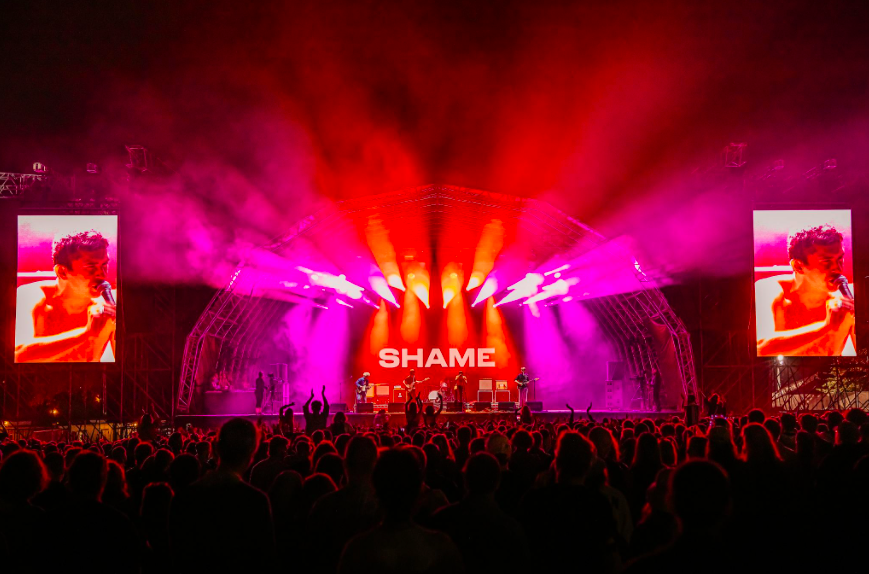
Our best experiences, though, centred on The Windmill’s main stage. The long standing creative force behind the venue, Tim Perry’s incredible cultural influence saw to a scenester’s dream lineup, with appearances from Idles, Shame, Squid, Goat Girl, Black Country New Road and Black Midi.
Squid’s crossrhythmic droners and voice-strains, courtesy of bandleader Ollie Judge, set a terrifyingly strong precedent for the day. Later, witnessing Goat Girl and BCNR play felt like watching puzzle pieces fit together. The latter band, especially, delivered a much more sprawling and extensive performance than their appearance at We Out Here two weeks prior, which made sense given that they were ‘at home’, playing to their own crowd. Their day – or day one at least.
Jude Iago James
Junction 2 plays host to some of dance music’s biggest names

As the summer of reuniting continues, we headed down to the inner-city edition of the Junction 2 Festival to check out some of the biggest names in dance music today.
Huge line-ups and eye-catching stage designs is what the Junction 2 organisers are really known for but with the obvious events taking place over the last two years, the team behind the festival moved away from the famous beneath the motorway location of Boston Manor Park this year and scaled things down to central London’s Tobacco Dock for a weekend of pioneering electronic artists.

With the bank holiday in full swing, London Bridge seemed like the epicentre of travel for festival goers, with other events such as Lost Village Creamfields, Reading, All Points East and far more (with of course the sadly cancelled Notting Hill Carnival) all taking place. Junction 2 felt like the home for the weekend of some of the biggest names in techno and once again it was all done in a big, bold and beautiful fashion. Set across 6 stages, varying from big room techno battle rooms, small intimate selector stages and live stream set ups, Tobacco dock felt like a suitable location for this year’s edition and gave an almost techno conference feel through the grey carpets and sound reducing curtains set across each stage, which although may sound unusual, faded behind the extreme displays of lighting and sound throughout the venue.
Kicking things off in the largest of the stages, Cici graced The Great Gallery with a selection of rhythmic pulsations and thumping groovers, then handing over to the likes of Sama’ Abdulhadi, Anna and techno queen Amelie Lens, all taking the crowd through a journey of industrial esc selections, which thrived through the heavy on the low end sound systems installed by the Junction 2 team. Even though large in any scale, The Great Gallery felt like an intimate setting to see some of the big room techno’s top names, who are usually spotted in stadium esc events across Europe during the festival season.

The real highlight of the day came from The Cavern stage, with its low ceilings and damp red brick pillars, felt as close to the dark dingy industrial basements which electronic music formed from. Afrodeutsche opened things up with her classic selection of Drexciyan delights and UK electro pulsations. DJ Boring was up next and the Australian born artist came through with a real distinct sound of 2000’s 8 bit infused electro house cuts, with the track’s breakdowns having pure elements of that Nintendo 64 sound design and dropping into the classic French house sound of the Justice era. Eris Drew was up next and as always she did not disappoint, with a selection of elegant house piano records such as Metropolis “Hyporeel” and some rare speed garage cuts the crowd were frantically trying to Shazam (with sadly no luck). Chatting to Eris before, it was only her second time in the UK since the pandemic and the excitement felt as real as it comes. Production wizard Jon Hopkins closed off The Cavern with a cohesive selection of aggressive groovers and edits of his own tunes such as “Everything Connected” which felt like they had been purposely reworked specifically for festivals such as Junction 2.
Like a lot of these major line-up day festivals taking place, it’s hard to be able to catch and settle into the sets across the day and the other stages held the likes of Maceo Plex, Dixon, Ok Williams, Juno favourite Subb-an and so many more and to be able to catch them all one must somehow disperse into multiple entities for a short period of time, but from the crowds reactions echoing through the central hangout spot, it seemed like all artists were continuing in bringing their a game and that is not even mentioning what took place on the Sunday.
As the night came to a close and people wondered of into the darkness of E1 across the road or the official Junction 2 afterparty at Fabric, London was truly back into the swing of things and as the Uber surge rose, so did the atmosphere across the capital.
Words – Jack Carr Miles
Photography Credit – Kris Humphreys
Most pop stars are shy but obsessed with music, says Green
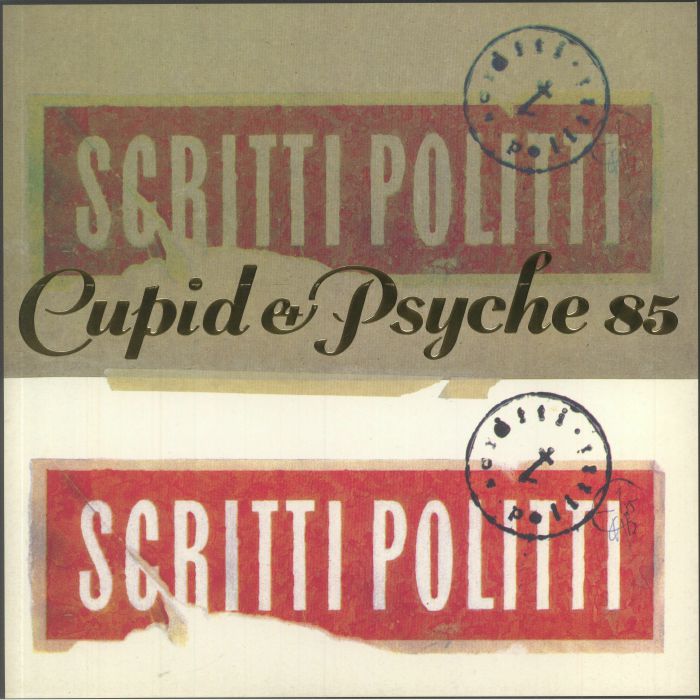
Scritti Politti’s Green Gartside discussed his mental breakdown and how he overcame the stage fright that stopped him playing live for 20 years at a rare public Q&A session last night.
The session at Rough Trade East in Brick Lane, London, was attended by a crowd of around 100 on Monday night. As well as the Q&A session, it also included live renditions of ‘The Sweetest Girl’, ‘The Word Girl’ and ‘Wood Beez (Pray Like Aretha Franklin)’ played by a three piece Scritti line up.
Gartside also told music journalist Peter Paphides that the 80s pop stars he socialised with during the band’s heyday, including George Michael and Pete Townshend, were usually shy and invariably obsessed with music. Robert Palmer, he said, despite his lounge lizard image, would spend dinners at expensive Chelsea restaurants discussing Studio One basslines.
Gartside discussed how his breakthrough hit ‘The Sweetest Girl’ was originally intended to be a duet for Kraftwerk and Gregory Isaacs. Isaacs had agreed to the plan but Kraftwerk never responded to the offer to provide the music. Several years later, he ended up spending the evening with Ralf Hutter and Florian Schneider, who had briefly explained “we don’t like reggae”.
He blamed the relentless promotional schedule he was obliged to undertake after chart success, mainly with regional TV stations in the US, for slowly destroying his self-respect and ultimately leading to the breakdown. “I don’t like sincerity,” he joked, “but the insincerity was incredible.”
After a stretch in hospital in West London on heavy medication, he moved to a remote cottage in Usk, Monmouthshire during the 90s and locked all his musical equipment away in a room he never entered. However, after getting into the habit of travelling to Bristol or London to buy hip-hop records, he slowly began to experiment with music again. “One by one the instruments made their way out again,” he said. At the time, he wanted nothing more than “to be DJ Premier – I just loved that sound.”
Asked what his current tastes in music were he replied simply: “hip-hop – it’s all I listen to.”
As the band prepares for a UK tour in late September and early October to celebrate the 35th anniversary reissue of the debut Scritti Politti album Cupid & Psyche 85, Green recalled his return to the live arena. He was persuaded by Rough Trade founder Geoff Travis to do a live show under an assumed name – Double G and the Traitorous Three – at the intimate Brixton Windmill, to help him overcome his notorious stage fright. Having assembled a band from friends at his Dalston local, including the barmaid who had never played bass before, he enjoyed the show so much that more followed.
“I feel I missed out on that fantasy of travelling around the country with a bunch of mates, getting pissed and playing gigs,” he said.
Scritti Politti play:
21st Sep 2021 » Norwich ¦ The Waterfront
22nd Sep 2021 » Birmingham ¦ Town Hall
24th Sep 2021 » Cardiff ¦ The Gate SOLD OUT
25th Sep 2021 » Manchester ¦ RNCM Concert Hall SOLD OUT
27th Sep 2021 » Glasgow ¦ St Lukes SOLD OUT
28th Sep 2021 » Leeds ¦ City Varieties
29th Sep 2021 » Gateshead ¦ Sage SOLD OUT
1st Oct 2021 » Brighton ¦ Concorde 2 SOLD OUT
2nd Oct 2021 » London ¦ O2 Shepherds Bush Empire
Behind the scenes with Brighton’s most colourful Team
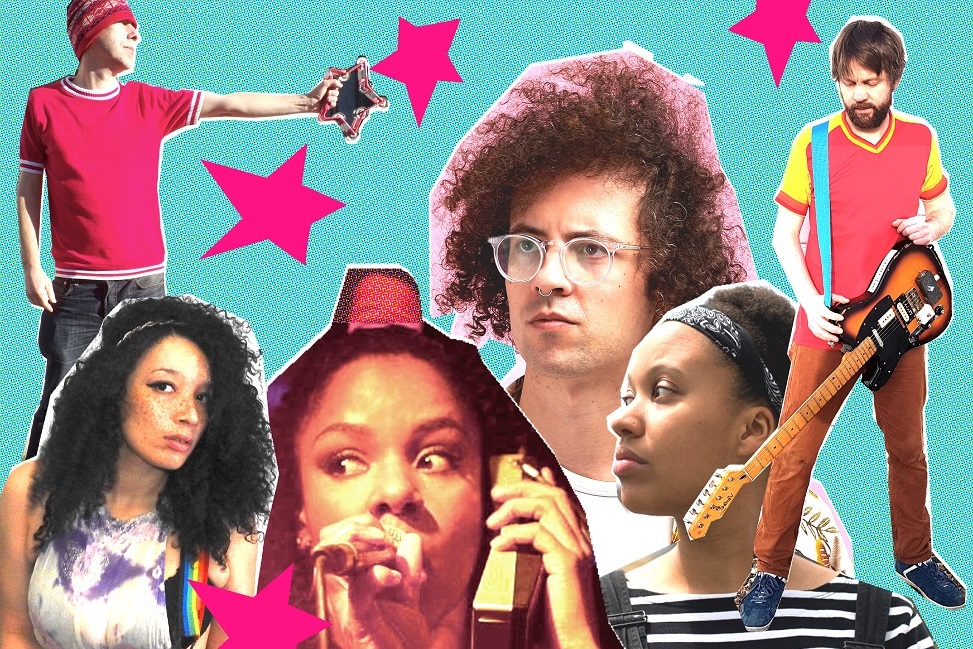
They say there’s no I in team, but in the case of The Go! Team they really couldn’t be more wrong. Listen to practically any record by the Brighton band, from 2004’s Thunder, Lightning, Strike to Get Up Sequences Part One, which emerged a matter of days ago, and it immediately summons up the image of a room bulging with people having the time of their lives.
It’s certainly true that numerous musicians have been involved in the group since its inception. But in reality The Go! Team, and especially their recorded output, is all very much about one man – Ian Parton. Indeed, the legend has it that Ian had already created the first album in his parents’ kitchen, getting his brother to mix and co-produce it, when he accepted a booking to play live at Sweden’s Accelerator Festival – and had to find a band to fulfill it.
It’s a modus operandi that has stayed pretty much intact to this day, as we discover when we chat to Ian in his Brighton flat on the eve of the release of their latest offering Get Up Sequences Part One. He kindly talks us through the process of making the album – and it’s not always what you’d expect.
It starts, of course, with records. Not just a few, though. Hundreds of the blighters. “I start out by listening to about 100 records a day, for day after day. I grab little snippets of melody so I build up this big library of ideas.”
Will he have a theme to this binge listening sessions?
“No,” he tells us, “although I used to be like that. I used to pick something like film soundtracks, Turkish psyche, 60s or whatever, and then cane that genre for weeks. But not anymore.”
The results, somewhat amazingly, do not get sorted into the genesis of separate tracks, but rather all end in up one huge, amorphous computer file. “A mega file of my ideas…” he calls it.
This monster file will be lived with and listened back to in the search for nuggets of sonic gold. Although, to Parton, recognising inspiration is not the tough bit. “The good ideas just jump out of the speaker…” The albums, he laughs, are like “a greatest hits of my edits… After a while the best edits rise to the top.”
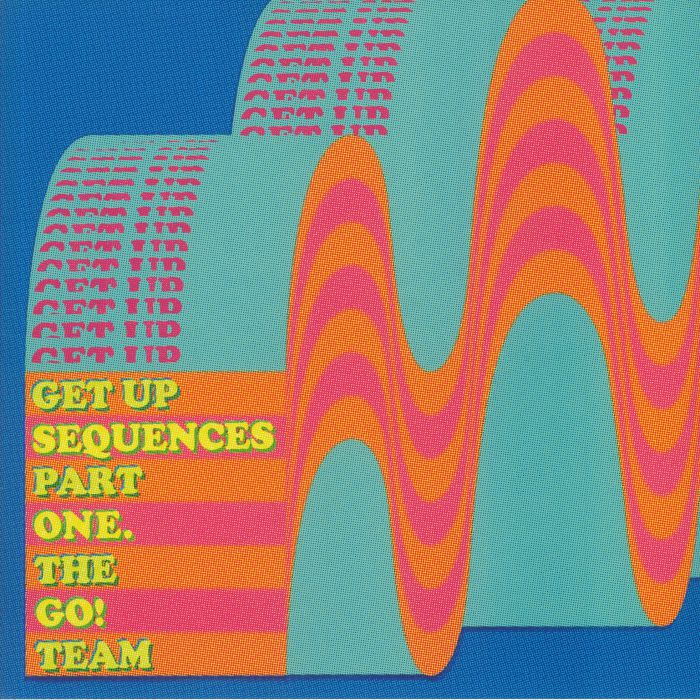
Parton evidently knows what he’s looking for, though. A keen sense of what the essential, core aesthetic at the heart of The Go Team! is. It’s there in the friction caused by juxtaposing different vibes, even different gradients of sound quality, that music from different eras throw up.
“I’m really into the idea of channel hopping,” Parton says, “jumping around and playing with the fidelity. The Velvet Underground had that, combining white noise and these cute songs. I know it’s a Go! Team Song when I’m almost oblivious to that jolting.”
It’s only once the songs are close to being fully formed that the band gets any parts to play. “I lock the songs down before I give them to the band,” he says, “and then the last stage is the vocals.” Which, in the case of Get Up Sequences Part One, meant a sojourn to the Isle of Wight and a studio built on one layer of a huge former Water Tower.
How was that, we ask? “Nice and cavernous,” he answers with characteristic succinctness.
It’s certainly a surprise to discover that as a character, Parton is every bit serious and direct as the music he makes is joyful and playful. But then he does, to be fair, describe the music of The Go! Team several times in our conversation as being like a parallel universe, perhaps one in which the other side of his personality can hold sway.
“It’s a parallel dimension,” he says, ”where all these things can co-exist, where you can have Roxanne Shante with My Bloody Valentine or Sonic Youth and the Jackson Five. I’m always surprised by it, always craving it. For me a The Go! Team! is about grabbing these things, drawing on them. Pick and mix, combining things that we love.”
And when we ask, given that The Go! Team have just released album number five and have a Get Up Sequences part two already lined up to follow in its wake, what keeps him continuing to make music, it’s clear the option of not doing it has never entered his brain.
“It’s neverending – it’s so mysterious, like a puzzle you can never solve.”

And, just as he is precise about what lies at the heart of a Go! Team tune, he is equally knowing about why they make the music they do.
“I very naturally lean towards these very positive songs, something really sincere and helpful, positive frequencies…”
Don’t, for a moment, doubt the motivation behind those positive vibes either. Parton says he’s highly suspicious of the term retro and, although it’s one that is regularly thrown at the band, it’s one he thinks misses the point entirely.
“For me this record is sincere, not retro or ironic. It might be bits from the 60s, 70s and 80s but I think the production is contemporary. It’s about the good things in life, not like some Coke advert, but more like the best bits of a holiday, the good shit basically. And I’m curating the good shit. That’s what I’m trying to do. But I don’t want to be sickly. It’s a tightrope and I’m tiptoeing along it.”
For Parton, the creative process was even trickier to negotiate than usual this time. Due to a rare disease – nothing to do with exposure to noise, the doctors have assured him – he woke up one in 2019 and realized he’d lost his hearing in his right ear.
”All the bottom end had come out of my left ear and there was no right at all. What I could hear fluctuated and sounded like a dalek talking. “ A scary experience for anyone, but for someone whose entire whose world revolves around their hearing, even more terrifying. He was dizzy and disorientated, and haunted by the thought that what was left would also disappear.
And yet somehow, quite amazingly, he battled on to complete the album, actually referring to the project as a ‘life raft’ that helped him through the feelings of dread and depression that followed. “I very naturally lean towards these very positive songs, something really sincere and helpful. Positive frequencies.”
Even though his hearing has not yet recovered, he’s resolved to carry on battling and creating. There’s already a second volume of Get Up Sequences already in the can, and Parton is considering starting work on a third. “It’s a case of limbering your brain up for it,” he declares, matter of factly. In the world of The Go! Team, in other words, it’s still a case of all system Go!
Ben Willmott
The new interface features loopback mixing and DSP effects.
New from PreSonus, the Revelator io24 is intended to be an all-rounder. With integrated loopback mixer, onboard DSP effects and a Stream Mix mode, it’s designed to work for streaming, podcasting, music creation and more. The interface features a pair of PreSonus’s XMAX-L mic pre-amps, balanced analogue outputs, plus 6-in/8-out digital IO. You can see it in action above.
The PreSonus Revelator io24 is expected soon, priced at £173.
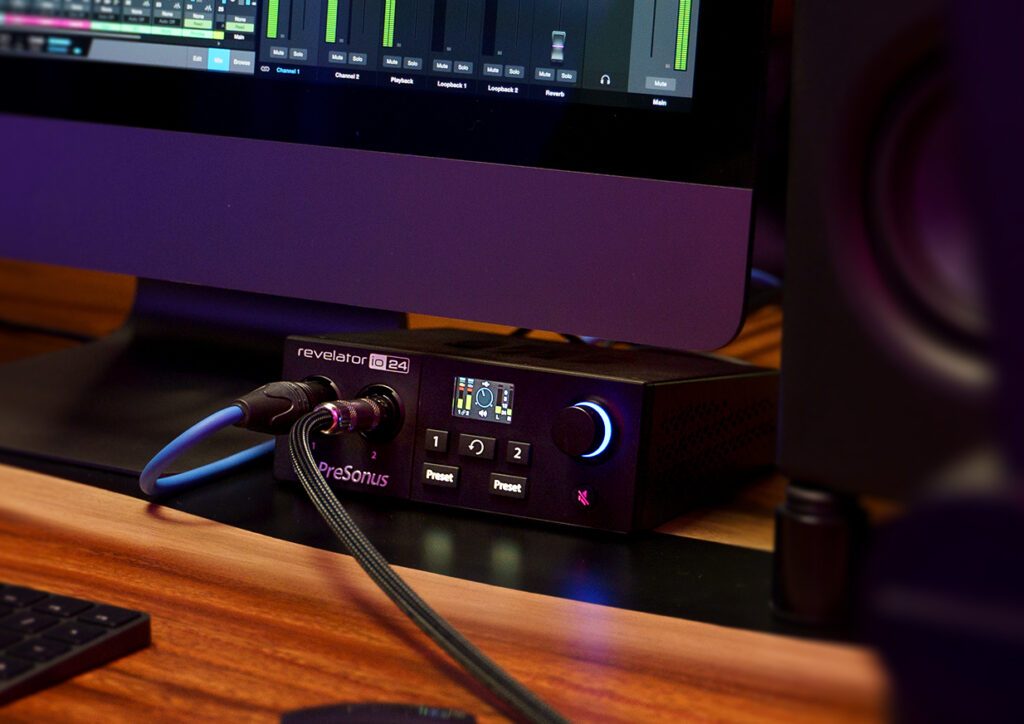
Dreadbox dive headfirst into the effects pedal market with the release of two hugely creative effects aimed to appeal to synth fans. Greg Scarth puts them to the test.
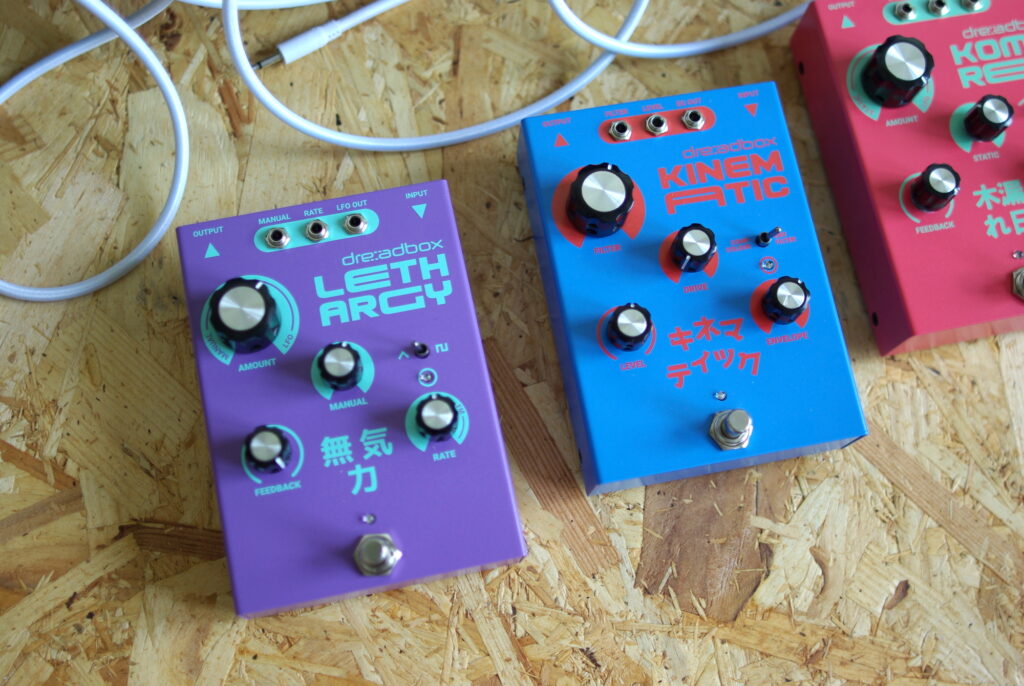
Aimed at newcomers to DJing, Numark’s Party Mix II is a cheap and simple controller that offers everything you need to get started.
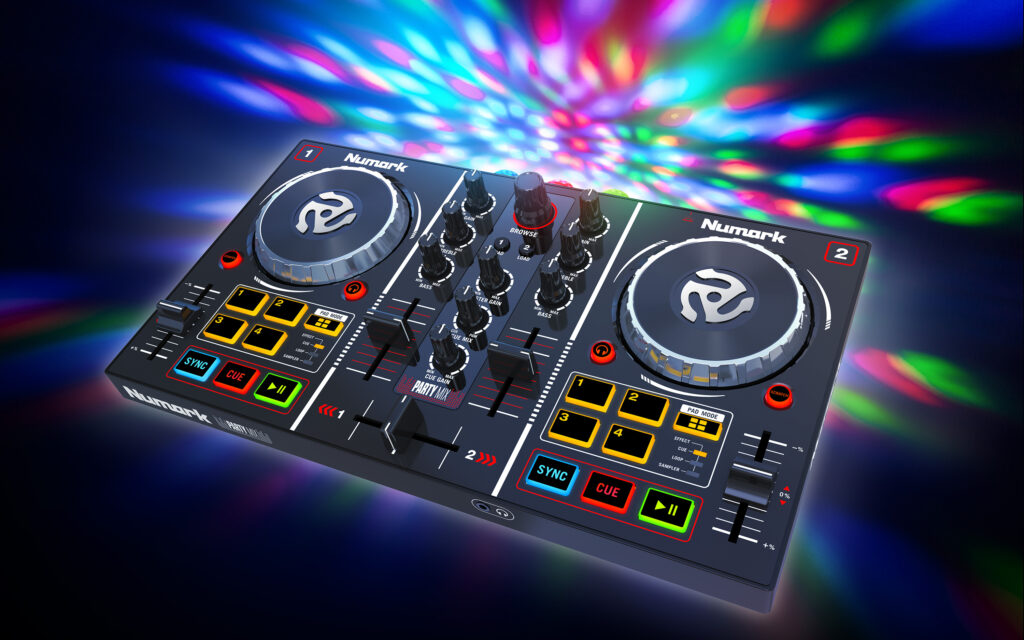
Amon Tobin takes the Juno Daily helm for the week
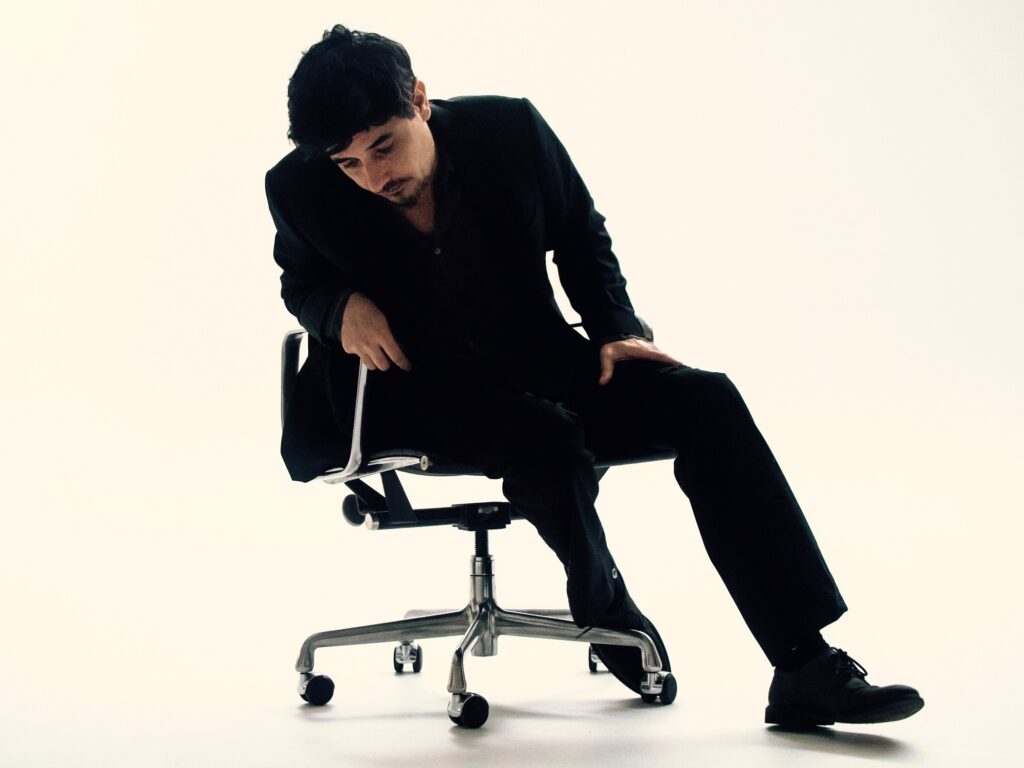
Hello all,
When Juno Daily asked Amon Tobin, to be the guest editor of the site this week, running up to the release of ‘West Coast Love Stories’, the first album under his new moniker Stone Giants, it was a shot in the dark.
What would the renowned producer pick to highlight and champion? After all it is 25 years this year since his first album release signalled his unique approach to sound and in the subsequent years he has never stood still; always subverting, searching, inventing and influencing. It has been quite a ride.
A couple of years ago he launched Nomark Records so that he could reveal even more ways us mere mortals could appreciate and explore the possibilities of electronic music. Nomark has released two Amon Tobin albums since 2019 and aliases as diverse as the tempestuous rock electronica of Only Child Tyrant, the delicately delicious psych folk of Figueroa, and the lush and moving sounds of Stone Giants, as well as delivering another blistering album, from his long term bass project Two Fingers. Tobin has rarely stepped from behind the curtain like this and Juno Daily is grateful that he took the time to share some of his current favourites with us. So what’s coming up
Well later in the week, there’ll be a full interview where Tobin explains how Stone Giants fits into his current world of multi-monikered producing, as well as the thinking behind this specific album.
But there’s a lot more to it than that. Given free reign to cover whatever he wanted, he commissioned – well, asked nicely – the mighty Little Snake to do an hour long mix for your delectation. Anyone who witnessed his online session for the virtual Two Fingers party hosted by Nomark last year will know exactly how mindbendingly intense the lad from Calgary is capable of being – and he does not disappoint, we can tell you.
Beyond that, Amon pinned down a few of his favourite studio collaborators and asked them a selection of questions from the profound to the downright daft. He also talks about one of his favourite ever albums in Dusted Down and took over the Big Up section to shout about a producer whose work is worthy of high praise.
All in all, it should be a fun five days – and five days you won’t want to miss if you’re an Amon Tobin fan.
Check out Amon’s interview with Thijs de Vlieger
The Róisín Machine keeps on rolling
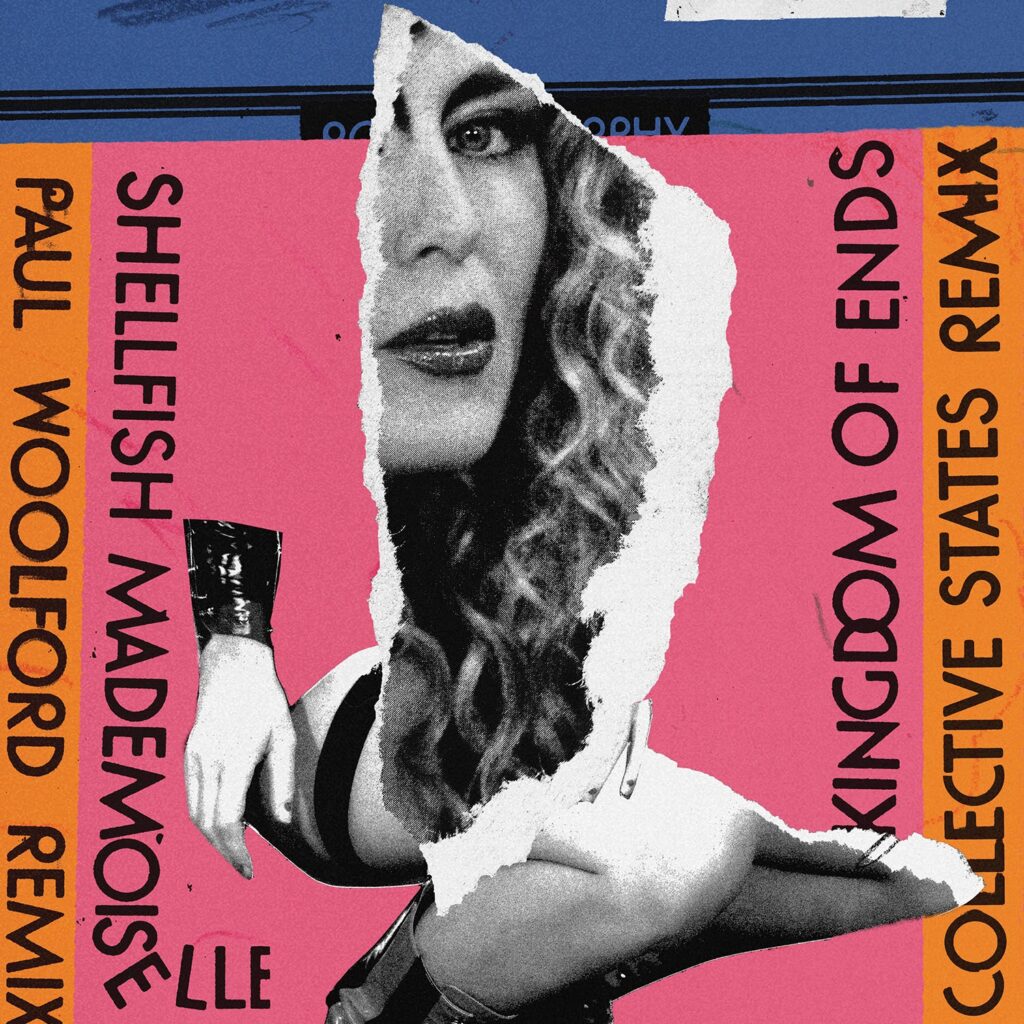
Róisín Murphy has released two new remixes of singles from her catalogue.
The first remix is by Paul Woolford aka. Special Request – of the track ‘Shellfish Mademoiselle’ from her acclaimed 2020 LP Róisín Machine – which will be premiered first by Woolford at the upcoming Radio 1 Big Weekend.
The second is a new, Beatport-exclusive remix ‘Kingdom of Ends’ by Collective States.
Both remixes follow ‘the digital release of Crooked Machine, a reinterpretation of the full Róisín Machine album by her long-time collaborator Crooked Man aka DJ Parrot. It also follows Murphy’s and appearance with Honey Dijon at Glastonbury’s Live Stream this weekend just gone.
2020’s ‘Róisín Machine’ was Murphy’s first full-length project since 2015’s Hairless Toys and 2016’s Take Her Up To Monto.
Murphy will be embarking on several live dates later this year, taking in headline shows through UK and Europe in the autumn. For more information, visit:
Crooked Machine is out digitally now, and will be released on vinyl in mid- June…
Full package comes with Paranoid London and Minsky Rock remixes
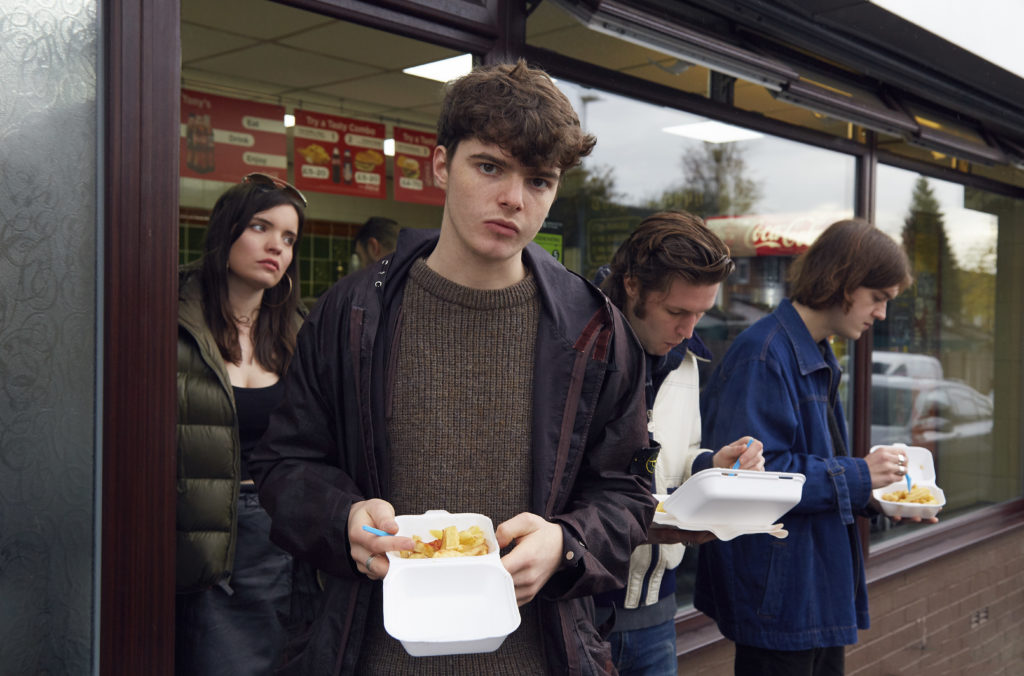
www.rosiebutcher.com
Working Men’s Club have shared the B-side to their recently-released single ‘X’ – the new, complementary track ‘Y?’ – along with four ‘X’ remixes by Paranoid London and Minsky Rock.
Self-produced by Syd Minsky, the B-side ‘Y?’ aims to continue on from where ‘X’ left off, deepening the A-side’s sound.
The remixes come from by Paranoid London (Quinn Whalley and Gerardo Delgardo) and Minsky Rock, an electronic side project of Syd from the band. Both remixes straddle acid and electro, and are releasesd as both vocal and instrumental versions.
All tracks from the new release will be available on 7” and 12″ vinyl on Heavenly Recordings.
After premiering their live version of ‘Y?’ at this year’s virtual 6 Music festival, the band have also announced a headline U.K. tour in November, which will conclude with their biggest show to date at Electric Brixton in London.
The full dates are:
07.11.21 – Engine Rooms – SOUTHAMPTON
08.11.21 – The Globe – CARDIFF
10.11.21 – The Fleece – BRISTOL
11.11.21 – Stylus – LEEDS
12.11.21 – The Ritz – MANCHESTER
13.11.21 – Garage (Stag & Dagger) – GLASGOW
14.11.21 – La Belle Angele (Stag & Dagger) – EDINBURGH
16.11.21 – Beat Generator – DUNDEE
17.11.21 – St Doms – NEWCASTLE
18.11.21 – Leadmill – SHEFFIELD
19.11.21 – Academy 2 – BIRMINGHAM
23.11.21 – Rescue Rooms – NOTTINGHAM
24.11.21 – Academy 2 – OXFORD
25.11.21 – Brixton Electric – LONDON
Both DJ controllers have built-in lighting, while the Party Mix Live also includes integrated speakers.